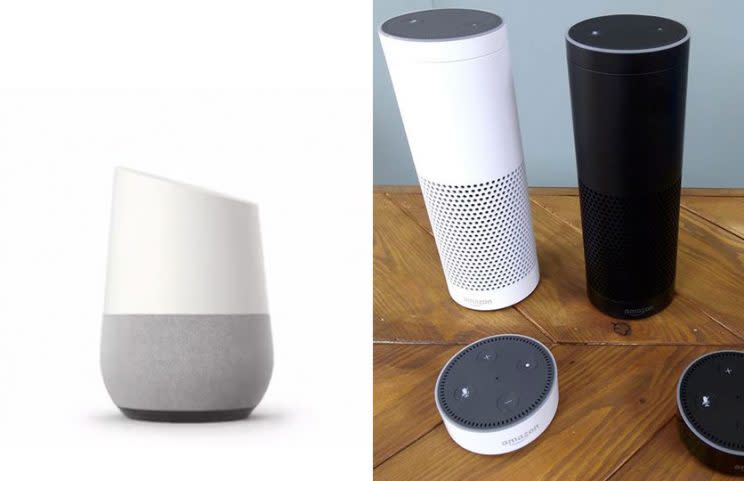Google launches Home, its answer to Amazon Echo
The home-assistant wars are heating up.
At its October 4 hardware event, Google officially launched its home assistant device, Home, first announced at Google I/O in May. The $129 device, which ships to stores on November 4, runs on Google’s new voice assistant, which is also built into Pixel, the new (and first ever) Google smartphone.
Google Home is an instant threat to Amazon Echo.
As Google CEO Sundar Pichai made clear at the event, the leading tech giants are all about artificial intelligence right now. (This was a narrative we heard at the Apple Keynote event in September as well.) “We’re evolving from a mobile-first, to an AI-first world. In this world, computing will be universally available,” he said. “People will be able to interact with it naturally and more seamlessly than ever before.”
Google wants its new voice assistant to deliver “a two-way conversation,” Pichai said. Facebook has said the same of its chat-bots inside Facebook Messenger. And that’s the idea with Home.
Google Home lets you play music, get answers from Google, manage tasks, and control other devices, all with your voice. It’s the same array of offerings as Amazon Echo, which operates on Amazon’s voice assistant, Alexa. And when Home hits the market in November, Echo will have already been on sale for two full years. It has sold more than 3 million units, according to the most recent estimates.
But even though Amazon was first out the gate with a home-assistant device, Google has an advantage: its vast data library and “knowledge graph” of over 70 billion facts. Amazon is not a search engine, and is not known for its hardware offerings. (Home may be the impetus for why Amazon is staffing up its Alexa team: Re/code reports that Amazon is looking to fill 400 positions in the division.)

With the rise of Google’s Pixel phones, more people will become used to using Google’s voice assistant. That will help boost sales of Home for anyone undecided between the two devices.
The visual appearance might also play a factor in purchasing: Home, which is short and stout (with four lights on top that illuminate when it’s “thinking”), might make you think of a candle holder or air freshener, and Google product VP Mario Queiroz acknowledged that such items were influences on Home’s look. It is a very different look from the tall, sleek cylinder of the Echo.
Google is so confident about Home that the company hopes people will buy many of them, to put one in each room. To that end, Google demonstrated a “context” system where only the speaker that hears you best will respond to a verbal command, so as to not have multiple units squawking at you at once.

Home is a lot more than a smart speaker, which is how Echo (perhaps unfairly) often gets framed. It’s really an Internet of Things hub for the connected home.
At launch, Google announced, Home has partnered up with Nest, Samsung SmartThings, Philips Hue, and IFTTT (If This Then That). More partners will come, including Netflix, which will allow you to command the Home, “Okay Google, play ‘Stranger Things'” (or whatever Netflix series you might want.)
“As homes become more connected, we think voice will become the standard method for interacting with devices,” said Google product manager Rishi Chandra. “It just works.”
—
Daniel Roberts is a writer at Yahoo Finance, covering sports business and technology. Follow him on Twitter at @readDanwrite.
Read more:
Here’s why Google Home can easily compete with Amazon Echo

